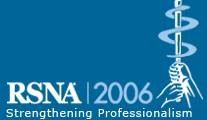
Abstract Archives of the RSNA, 2006
Jacob Sosna MD, Presenter: Research grant, Koninklijke Philips Electronics NV
Olga Semen Shapiro MS, Abstract Co-Author: Employee, Koninklijke Philips Electronics NV
Raz Carmi PhD, Abstract Co-Author: Nothing to Disclose
Amnon Steinberg BS, Abstract Co-Author: Nothing to Disclose
Amiaz Altman PhD, Abstract Co-Author: Employee, Koninklijke Philips Electronics NV, Haifa, Israel
John Moshe Gomori MD, Abstract Co-Author: Research Consultant, Odin Medical Technologies, Ltd, Newton, MA
Multi-Energy MDCT may enhance organ texture. Our purpose was to quantitatively compare the texture of the normal liver and spleen through the different contrast injection phases on images acquired from the two detector layers of a novel multi-energy CT.
This prospective study was performed on a prototype of a Multi-Energy MDCT (Philips Medical Systems, Cleveland , OH) in accordance with our IRB requirements. The study included data obtained from 14 patients (ages 45-76 years). The patients were imaged on a 64-channel CT scanner, that was converted to a dual layered scanner, with data for each slice acquired from two superimposed detector layers. Study parameters were: 2mm slice thickness, 1mm increment, 140kVp, 250 mAs. Regions-of-interest (ROI) were drawn on the liver, spleen, and air anterior to the abdomen. Organ texture was defined as the difference in standard deviation (SD) of the organ ROI in the two layers divided by the air SD. These organ texture measurements were obtained for images acquired from each detector layer separately, as well as the combined image, which is comparable to standard single detector layer MDCT.
Analysis was performed in 20 phases. The mean calculated texture ratio was 4.01 (range 0.9-46.5) for the liver and 2.89 (range 0.1 to 16) for the spleen. Mean values for the liver and spleen were: 0.09 and 0.99 respectively for nonenhanced sequences (n=7), 4.08 and 3.89 for the arterial phase (n=4), and 6.72 and 3.83 for the venous phase (n=9) (p=0.03).
Organ texture ratios are lower at nonenhanced than at the venous and arterial phases. Our preliminary data suggests that organ texture can be analyzed with Multi-Energy MDCT.
Multi-Energy MDCT enables quantitative texture analysis of abdominal organs. In the future, changes in texture may enable detection of pathological states even before morphological changes are visible
Sosna, J,
Shapiro, O,
Carmi, R,
Steinberg, A,
Altman, A,
Gomori, J,
New Frontiers in Abdominal Imaging: Multi-Energy MDCT of Organ Texture. Radiological Society of North America 2006 Scientific Assembly and Annual Meeting, November 26 - December 1, 2006 ,Chicago IL.
http://archive.rsna.org/2006/4431789.html

